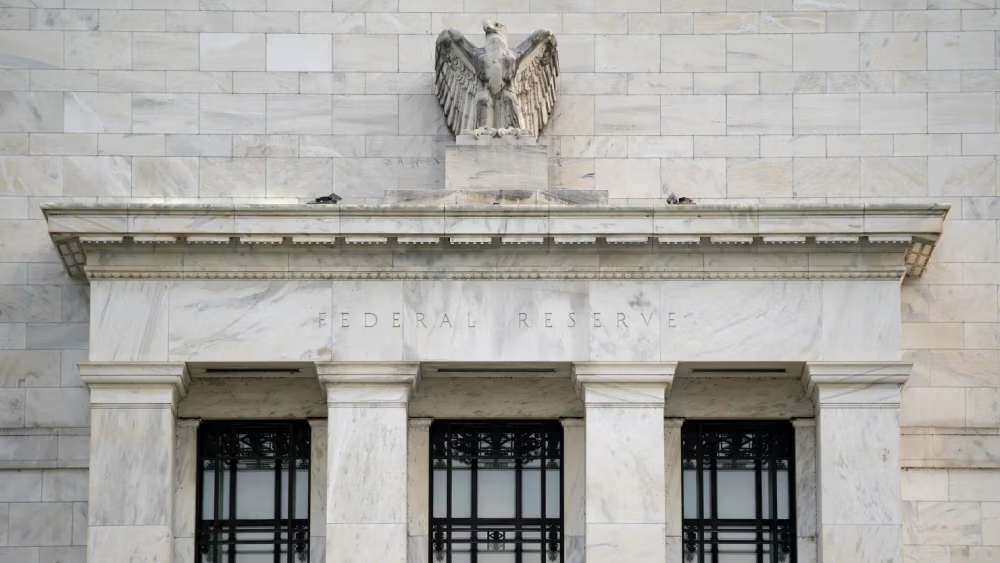A global bond sell-off is intensifying as concerns over fiscal stability resurface, following Moody’s downgrade of the U.S. credit rating and renewed scrutiny over President Donald Trump’s proposed tax bill.
“Events such as credit rating downgrades or budgets that risk expanding deficits tend to bring fiscal concerns front and center of investors’ minds, forcing them to reprice long-end risk,” said Rong Ren Goh, Portfolio Manager, Fixed Income at Eastspring Investments.
Trump’s failure to secure full Republican backing for his sweeping tax overhaul — which is projected to drive U.S. debt higher by $3 trillion to $5 trillion — appears to have triggered a wave of selling in bond markets globally.
“Markets do not find Trump’s ‘big, beautiful tax bill’ beautiful at all,” said Vishnu Varathan, a managing director at Mizuho Securities. “USTs were beaten up in an ugly sell-off.”
On Thursday, the yield on the U.S. 30-year Treasury rose above the 5% threshold for a second consecutive day, touching 5.088% — a level not seen since November 2023. Meanwhile, the benchmark 10-year Treasury yield has climbed more than 15 basis points since the start of the week.
Market analysts attribute the Treasury sell-off to dwindling investor confidence in U.S. assets, compounded by a broader exit from American markets in April.
This time, however, investors are also pulling money from other major bond markets. The sell-off is being driven by varying domestic factors in each country, but with a shared theme of mounting discomfort over deteriorating fiscal outlooks.
“These concerns are prompting a reassessment of the term premium required to hold longer-dated bonds,” said Goh.
Japan has not been spared. The yield on Japan’s 40-year government bond surged to a record 3.689% on Thursday, while its 30-year yield hovered near all-time highs at 3.187%. The 10-year benchmark yield has risen 9 basis points this week, reaching 1.57%.
According to Bank of America, part of the steepening in Japan’s yield curve stems from structural changes. Japanese life insurers, once heavy buyers of long-dated bonds to meet solvency regulations, have largely fulfilled those requirements and pulled back on purchases.
Varathan added that the Bank of Japan’s shift toward tightening monetary policy — in contrast with Japan’s fragile fiscal position — has also contributed to the sell-off.
That trend poses further challenges for U.S. debt. “By making Japanese assets an attractive alternative for local investors, it encourages further divestment from the U.S.,” said George Saravelos, Deutsche Bank’s global head of FX strategy, in a research note.
In Europe, German government bonds are under pressure as well. Yields on 30-year bunds rose over 12 basis points this week, while the 10-year yield increased more than 6 basis points.
“The removal of the German debt brake in tandem with continental re-armament, alluding to an end of Europe’s pro-austerity bias and a revival of regional growth prospects were, arguably, the catalyst for the process [bond sell-off],” said Philip McNicholas, Asia strategist of the global macro fixed income team at Robeco.
German bunds are also feeling the weight of structural budget deficits. “German bunds are also pressured by wider deficits, which are likely to be structural,” noted Mizuho’s Varathan.
Across Europe, 30-year government bond yields have climbed more than 12 basis points this week, with 10-year yields rising approximately 7 basis points.
“Investors don’t really have much love for long duration bonds right now,” Steve Sosnick, chief strategist at Interactive Brokers, told CNBC.
Sosnick added that concerns about global inflation are also a “killer” for longer-term bonds. While shorter-term yields are typically driven by central bank policy, longer-term debt is more sensitive to investor expectations about future economic performance.
However, some emerging markets are defying the trend. Yields on 10-year government bonds in India and China have slipped slightly this week.
McNicholas attributed this to the fact that both countries have more domestically-focused bond markets and maintain capital controls. “Foreign investors and global factors are far less relevant determinants for their respective yield curves,” he said.
India’s 10-year bond yield edged down about 2 basis points since Monday, while China’s slipped marginally.





